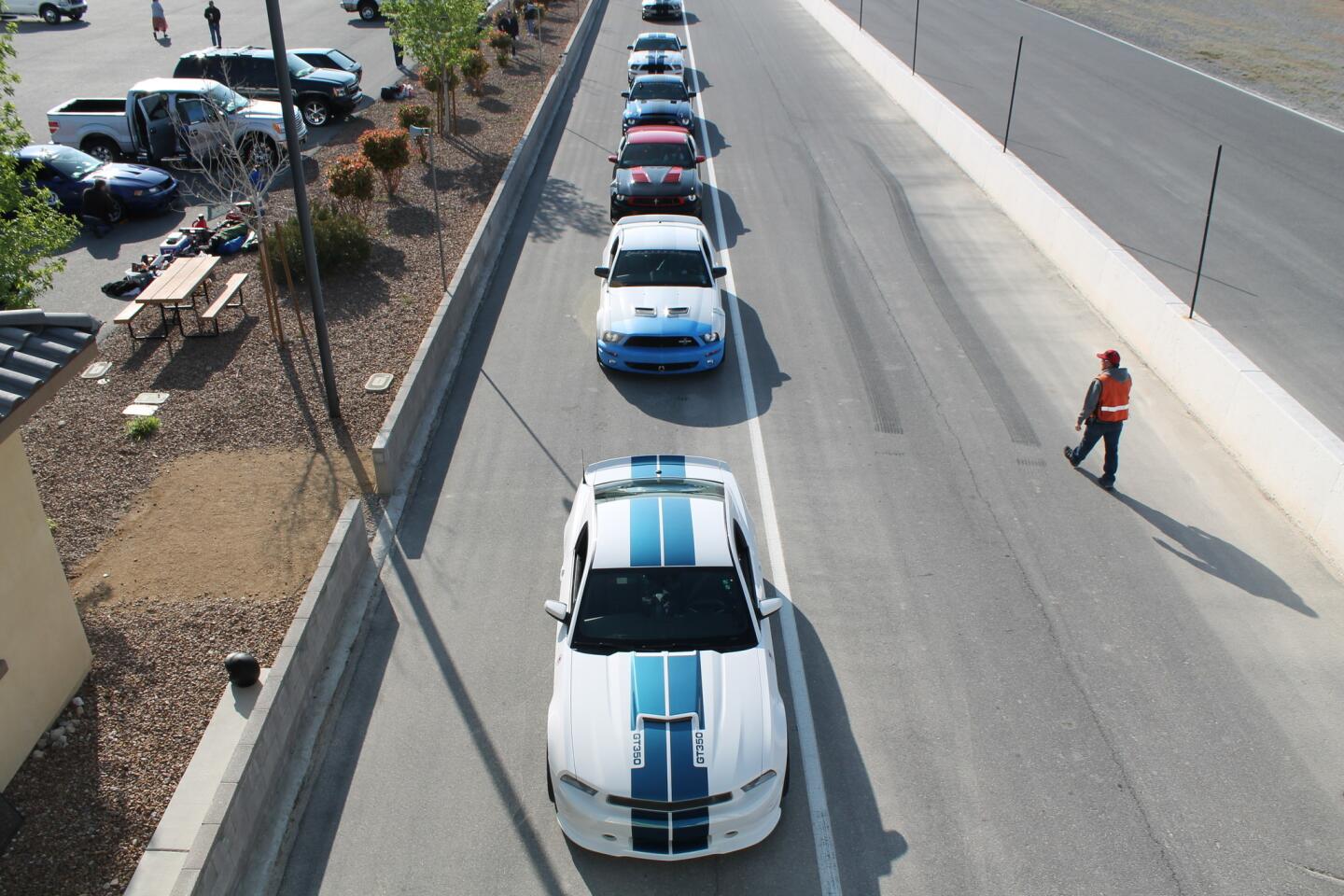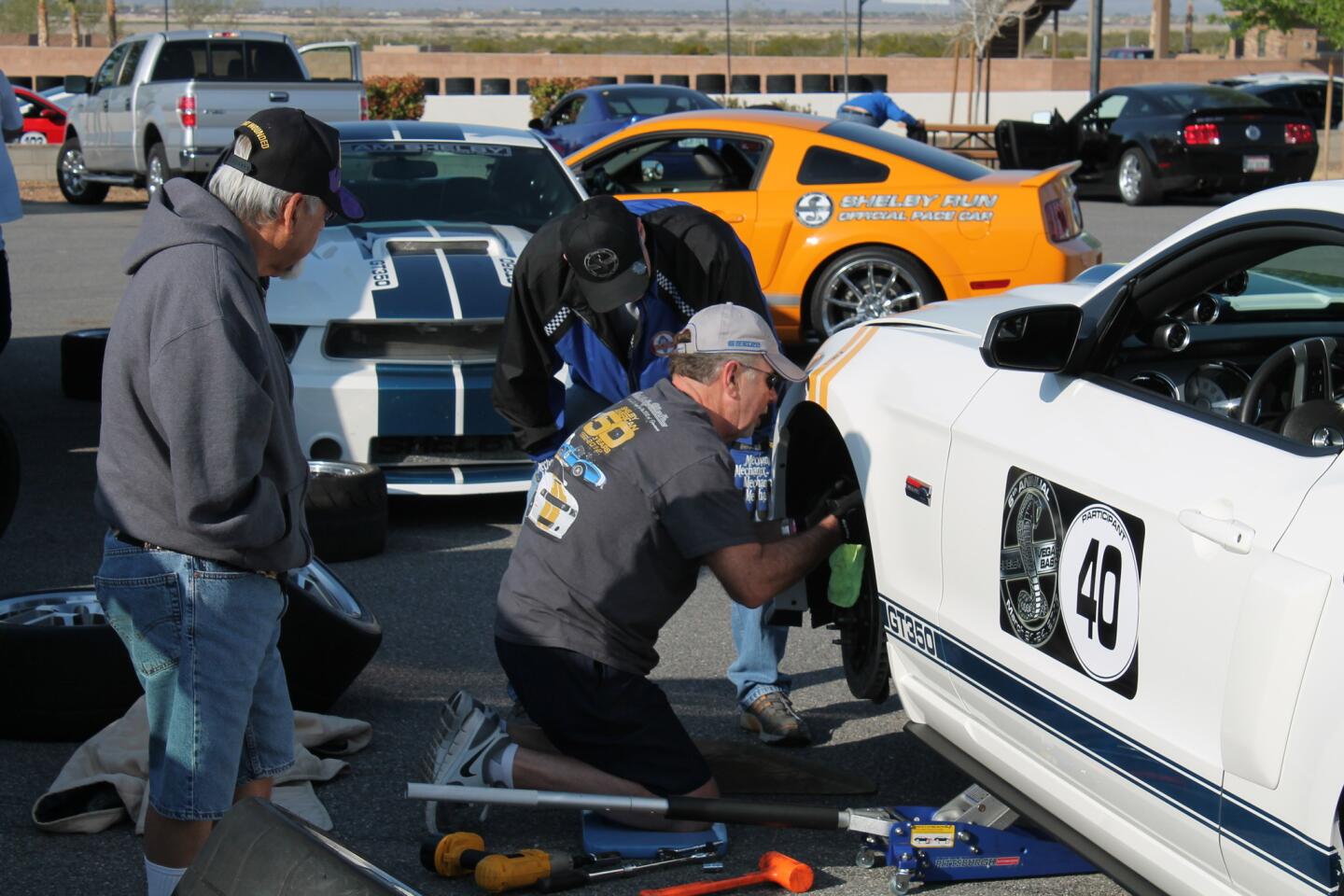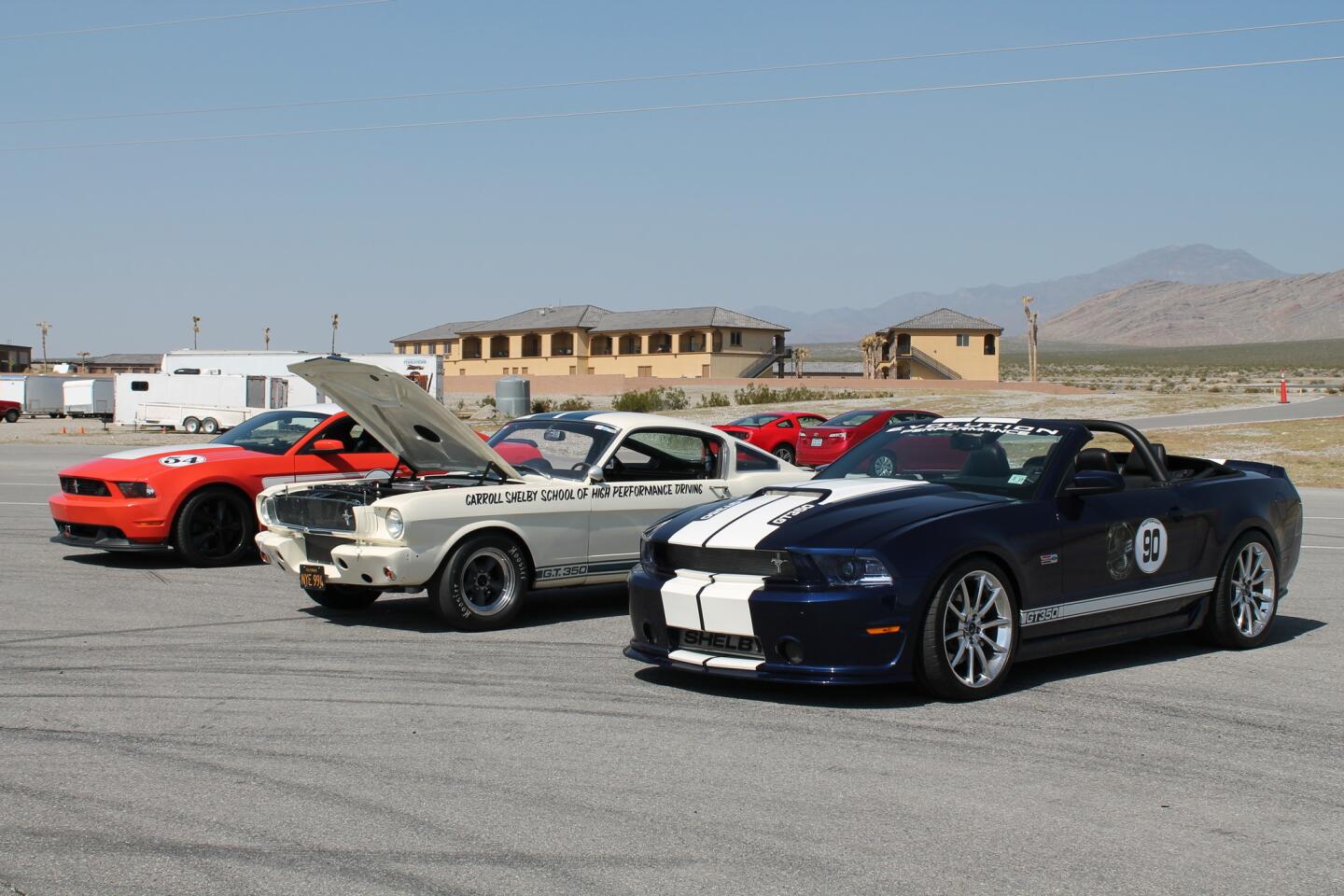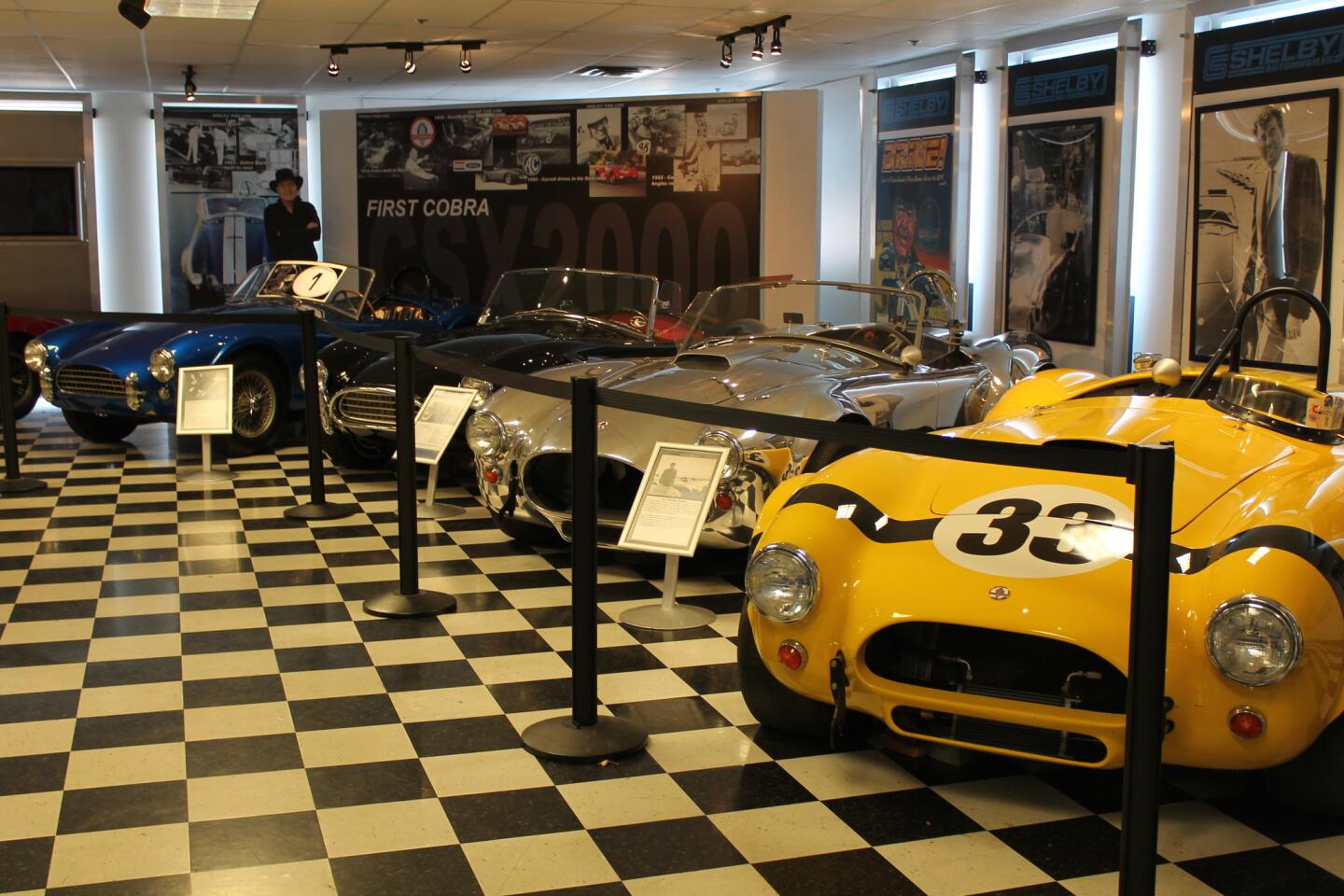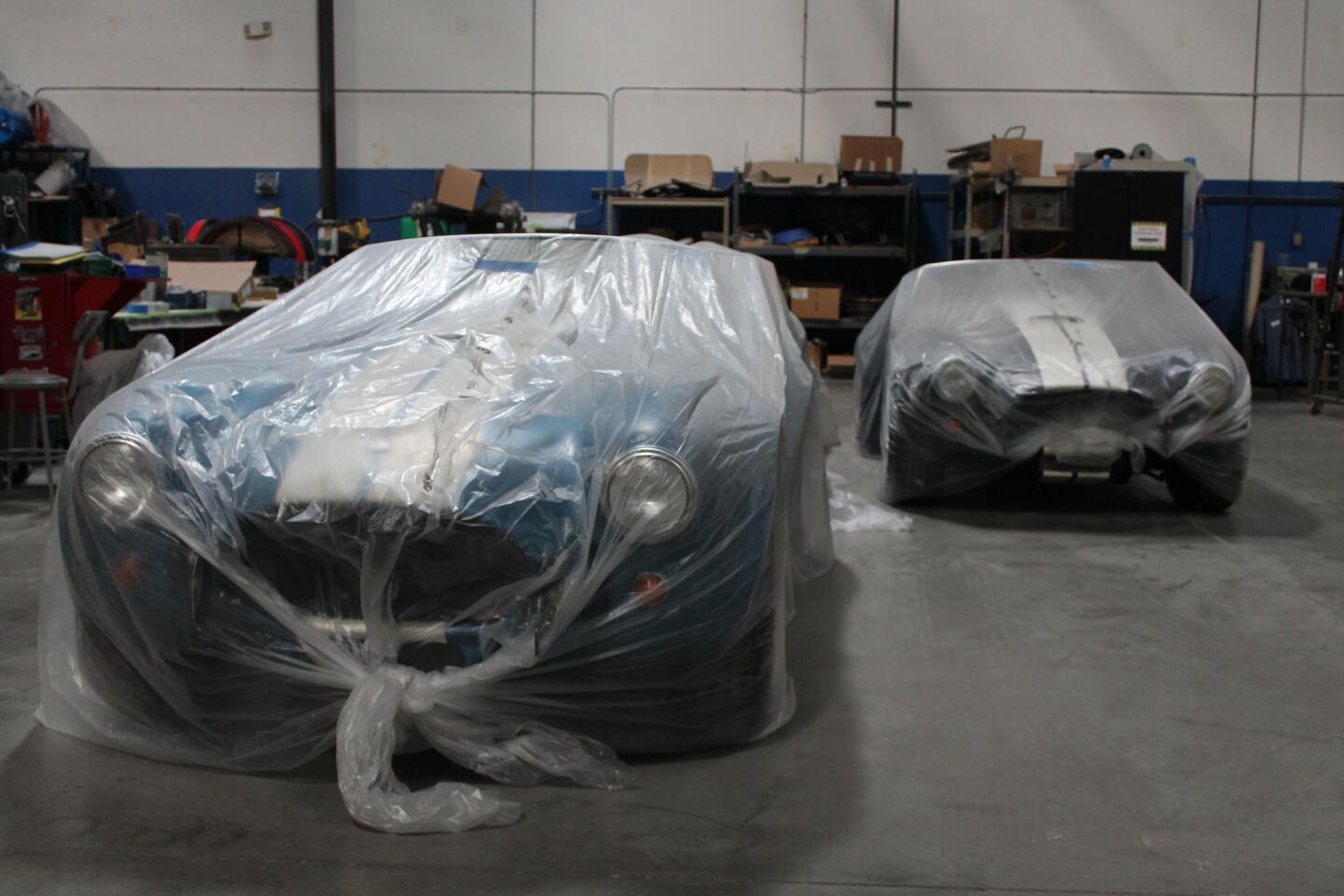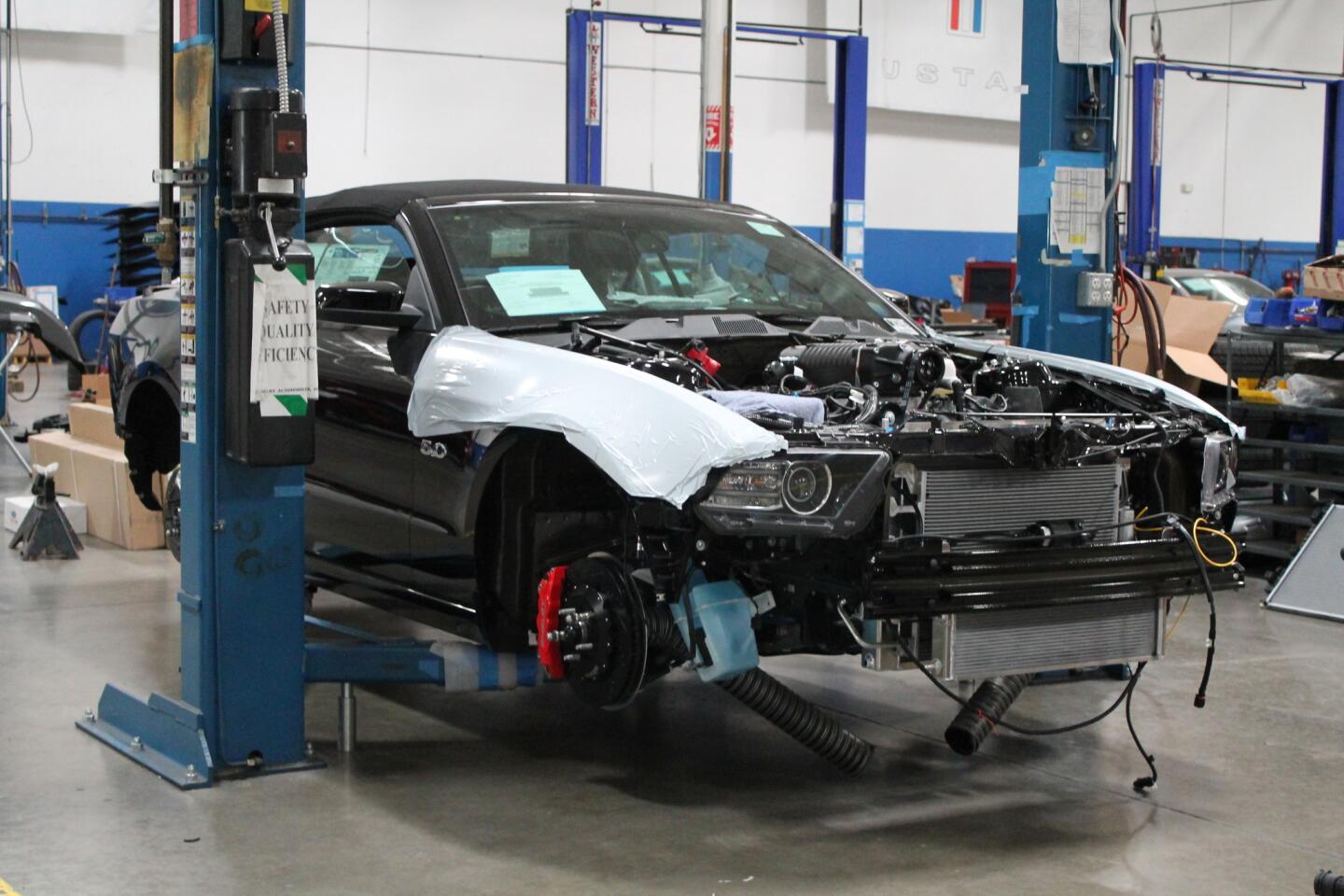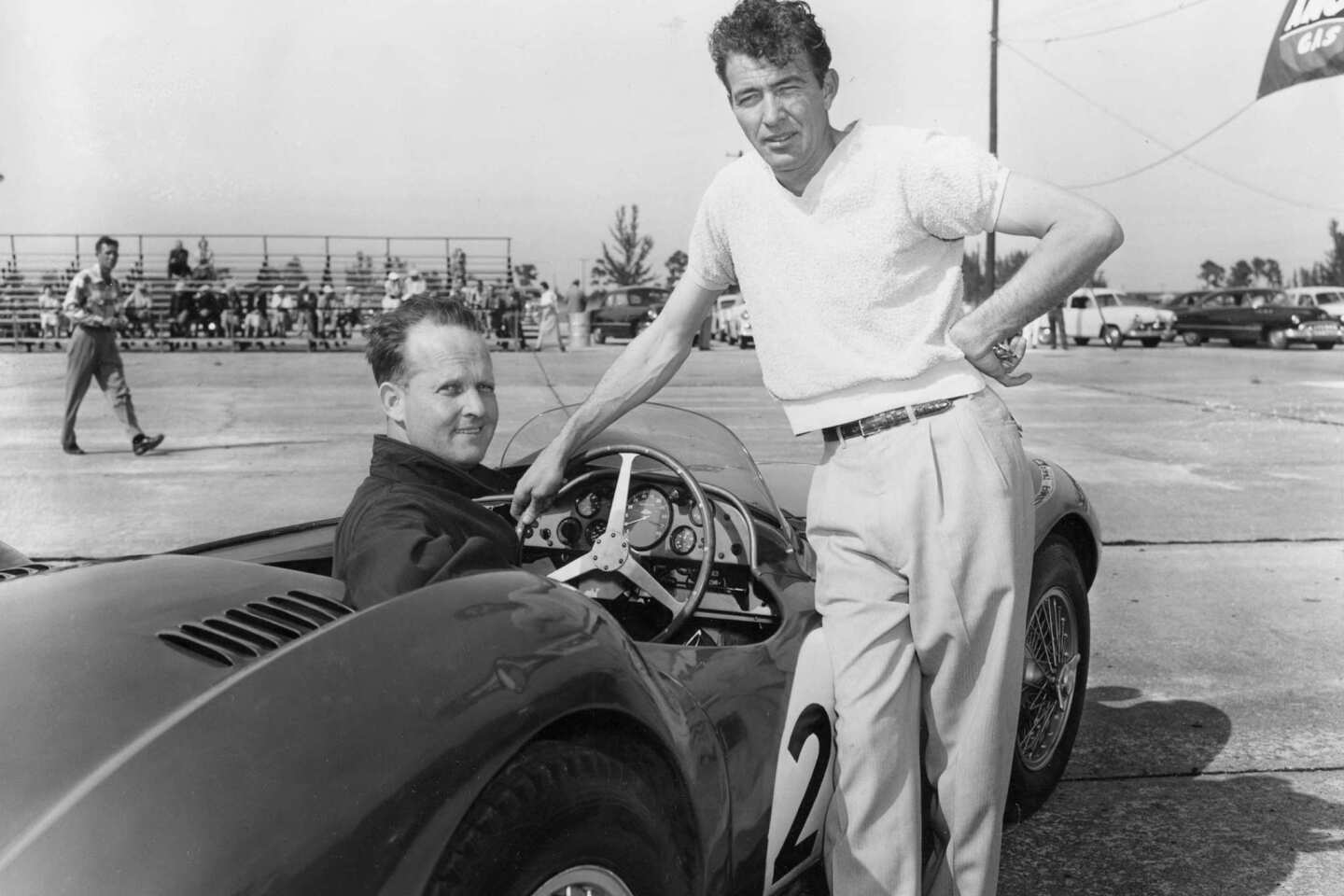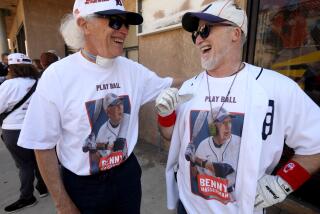Carroll Shelby dies at 89; cult classic car designer
Carroll Shelby, the charismatic Texan who parlayed a short-lived racing career into a specialized business building high-performance, street-legal cars, died Thursday. He was 89.
Shelby died at Baylor Hospital in Dallas, according to an announcement by his company, Carroll Shelby Licensing. A cause was not disclosed.
He led a colorful, outsized life that touched virtually every corner of the automotive world, said Leslie Kendall, curator of the Petersen Automotive Museum in Los Angeles.
“He was the only individual to influence the designs of all three major American automakers. Everything he touched became legendary,” Kendall said. “Even recently he was working on an experimental engine.”
Living in the fast lane was a matter of fact for Carroll Shelby, who designed the cult-classic Shelby Cobras and Ford’s Shelby Mustang.
He raced cars. He had a heart transplant from a Las Vegas gambler in 1990 and a kidney transplant from a son in 1996. He was married seven times.
While trying to fend off an anticipated heart attack, he drove in a 200-mile race in 1960 with nitroglycerin pills underneath his tongue, finishing third at Laguna Seca Raceway in Monterey.
“If I hadn’t slowed down each time I popped one of those pills, I might have won,” he said. He announced his retirement as a driver later that year after clinching the U.S. Road Racing championship series at Riverside International Raceway.
Five years earlier he had replaced a plastic cast on his broken elbow with a fiberglass one and had his hand taped to the steering wheel so he could help Phil Hill drive a Ferrari to second place in a 12-hour race at Sebring, Fla.
“Carroll Shelby is one of the most recognized names in performance car history, and he’s been successful at everything he’s done,” said Edsel B. Ford II, a member of the board of directors of Ford Motor Co.and great-grandson of Henry Ford, founder of the company. “Whether helping Ford dominate the 1960s racing scene, to building some of the most famous Mustangs, his enthusiasm and passion for great automobiles over six decades has truly inspired everyone who worked with him.”
Shelby most recently collaborated with the automaker on the 2013 Ford Shelby GT500 Mustang, which has 650 horsepower, making it the most powerful production V8 in the world.
Born Jan. 11, 1923, in Leesburg, Texas, Carroll Hall Shelby grew up in east Texas and attended high school in Dallas. He served as a flight instructor at Lackland Air Force Base near San Antonio during World War II.
Although he did not become a race driver until he was 29, his rapid successes and unique bib-overalls racing uniform made him a legendary figure before he retired at 37.
His first race, in January 1952, was in a drag race in a friend’s MG. Later that year, he drove the same car in an oval track race in Norman, Okla., and won.
That’s about the time the bib overalls became part of his lore.
“I was back home in Texas working on a chicken farm when I remembered I was supposed to be at a race at the Eagle Mountain Naval Air Station,” he recalled. “It was real hot, so I didn’t bother to change. The overalls were comfortable, so when I got to the track I kept them on. When I noticed how much attention they got, I decided to wear them all the time.”
He first attracted international attention in 1954 in a Kimberly Cup race in Argentina where he drove an Allard with Dale Duncan. When the engine erupted in flames, Shelby instructed Duncan to douse the fire by urinating on it. The fire out, Shelby finished 10th, first among the amateur teams.
Returning home, he set a number of endurance records driving an Austin-Healey for Donald Healey at the Bonneville Salt Flats in Utah.
In 1957, he won 19 consecutive races and was named Sports Illustrated’s driver of the year for the second time.
Racing in Europe in 1959, he helped Aston-Martin capture the World Manufacturing Championship by winning the 24 Hours of LeMans with Roy Salvadori as a co-driver.
When his racing career ended a year later after his third national championship, Shelby set his mind on building an American sports car that could beat the best European models. After he learned that AC Bristol, a British auto manufacturer, was discontinuing a certain chassis, he had some shipped to him at his new base in Los Angeles. Then he talked his friend Lee Iacocca, then a Ford executive, into building a car that would “blow the Corvettes into the weeds.”
The light European-style chassis melded with a big American V8 engine eventually became the Shelby Cobras that are now American cult cars.
“I had a lot of fun driving race cars, but it wasn’t my No. 1 priority,” Shelby told The Times in 2006. “Driving race cars was an avenue for me to learn how to build my own car, and that was my ambition all along.”
Showing a knack for salesmanship, Shelby had the same car painted different colors so that he could get cover feature stories in different automotive magazines at the same time. He liked to tell the story that when he was down to his last $20, he used it to take an auto writer to lunch to talk him into a story about his Cobras.
Road & Track magazine called the hot-rod “nothing more than a weapon designed specifically for proceeding from one point to another in a minimum amount of time.”
The Cobras won Sports Car Club of America manufacturing championships from 1963 through 1965 and in 1965 beat out Ferrari, the first and only time an American-conceived car won the world championship. A year later, European rule makers banned the 7-liter engine used by Shelby.
“We were a bunch of hot-rodders from Venice, California, and to beat Ferrari the way we did, well, I’m still proud of it,” Shelby said in 2006.
Ford had hired Shelby in the mid-1960s to pump up the performance of the Mustang, but by 1970, when the expense of building Shelby’s version became prohibitive, his interest flagged and he turned to other endeavors, including a safari business in Africa which he ran for seven years, and a chili cook-off in Terlingua, Texas, that led to his marketing his own brand of chili.
In 1982, Iacocca, by then chairman of Chrysler Corp., brought him back into the car designing and marketing business. Shelby served as a performance consultant for Chrysler sports car programs and helped introduce the Viper, a 400-horsepower, V-10 product that emphasized power. He also worked briefly in the ‘90s with Oldsmobile on plans for a lightweight, high-powered car.
In recent years he had returned to Ford to work on the concept for the new Mustang GT500 and wrangled with manufacturers of Cobra replicas over the rights to the design. His Las Vegas factory cranked out his own fiberglass version, and he also had a plant there making racing tires.
He established the Carroll Shelby Children’s Foundation to pay medical bills of children who have heart disease and can’t afford treatment. A portion of proceeds from the sale of his Cobras goes into that fund.
Shelby had homes in Los Angeles and Las Vegas as well as two ranches in Texas.
In addition to his wife, Cleo, his survivors include sons Patrick and Michael (who donated a kidney to his father); a daughter, Sharon Levine; and a sister, Anne Shelby Ellison, all of whom live in the Dallas area.
Glick, The Times’ longtime motor racing writer, filed a version of this obituary before his death in 2007.
More to Read
Start your day right
Sign up for Essential California for the L.A. Times biggest news, features and recommendations in your inbox six days a week.
You may occasionally receive promotional content from the Los Angeles Times.
